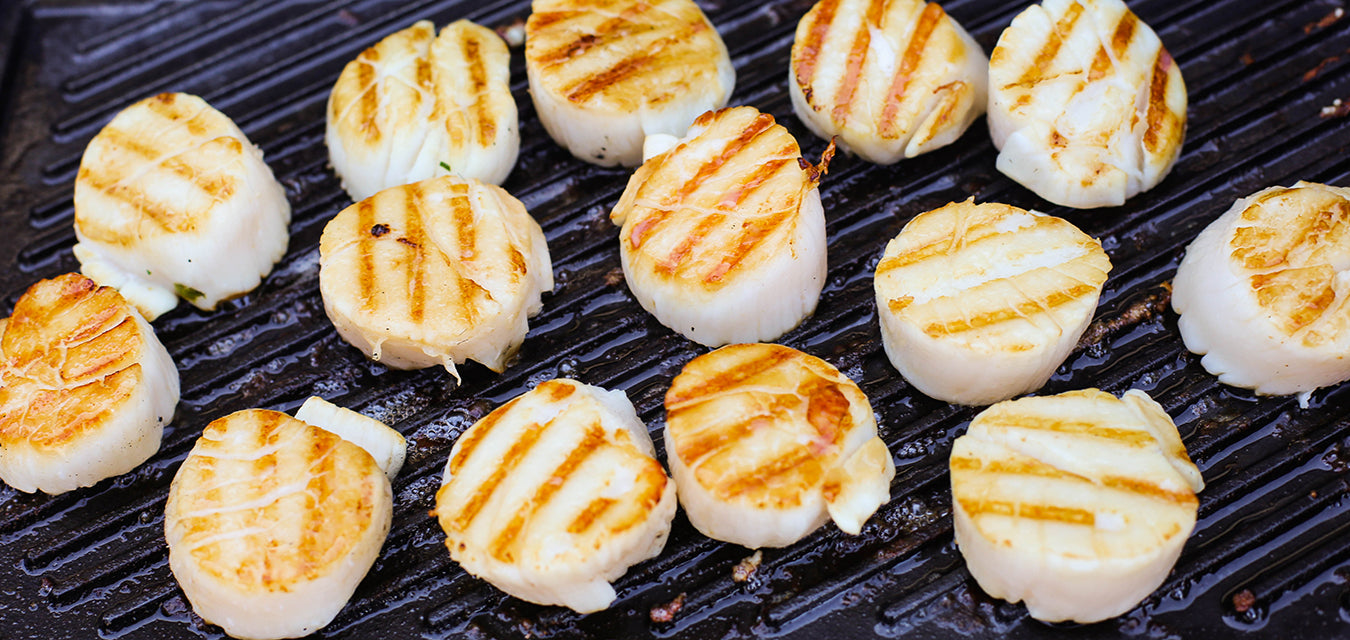Quick Scallop Guide

Here at Maine Lobster Now we have expanded our menu with more Sea Scallop options
Since our start, we have offered the 10/20 variety of scallops. As you will see we now also offer the smaller 20/30 variety and jumbo U-10 and U-8 sea scallop varieties.
For those who are unfamiliar with these scallop descriptions, we'll explain so you can choose the option that best suits your culinary needs.
Sea Scallop Sizes Explained
Sea scallops are sorted based on the number that are portioned per pound. The smallest of these being the 20/30 assortment. This means that per pound for 20/30 sea scallops, you get between 20 and 30 scallops. U-8 means that you get eight scallops per pound. This is the largest available. With two major classes of scallops, Bay Scallops and Sea Scallops, grading by size is the easiest way to determine which class a scallop falls into.
Bay Scallops vs. Sea Scallops
Bay Scallops are caught in shallow waters closer to bays and estuaries. This variety is sweeter in flavor, but renders less meat. With bay scallops you can typically expect close to 100 pieces in a pound and cooking can be much more difficult. Athough many think the effort is more than worth it because the meat is so sweet and tender.
The more common class you will find available is the Sea Scallop, which are caught further away from land and have a much larger shell and more edible meat. Sea scallops are the variety we offer at Maine Lobster Now. They are delicious, easy to pan sear, and offer more meat per portion.
What are Diver and Dayboat Scallops?
The names Diver and Dayboat scallop are names given to describe the method with which they are caught. Diver Scallops are fished in season by hand from November to April. Many vendors will advertise their product as diver scallops, but with no real way of verifying the method used to catch this is often misleading.
Diver Scallops are commonly thought to be more ecologically friendly because the individuals picking them can be more selective and limit catch to the larger, more mature mollusks. This can be exponentially more time consuming and can cause the price of these items to be much higher than the conventional method of dragging.
The term Dayboat Scallops refers to the length of the fishing trip and to be categorized as a Dayboat Scallop the boat used to fish must return within 24 hours of departing. This increases the freshness of the scallops since they are not stored on the boat for as long as the more common scallop fishing trips.
Are Dry Scallops better than Wet Scallops?
Along with size and method of catching scallops the last major distinction for these delicious mollusks is whether they are dry or wet. These two terms refer to the method in which the scallops are handled and sold. Wet scallops are treated with and soaked in phosphates which add water weight, whereas their counterparts are not treated with this same liquid.
The process of soaking the scallops in that phosphate mixture is advantageous for the processor by lowering costs, also increasing water weight allows them to charge more. We at Maine Lobster Now only sell dry scallops and the difference in taste is substantial. Wet scallops are typically tougher and less-flavorful with the excess liquid often causing a soapy taste and smaller final product. The dry scallops we offer will have a sweet and natural taste with a much better caramelization and full flavored final product.
Interesting Scallop Facts
Scallops are an extremely intricate creature with features that make them unique from most animals in the Mollusk family. They are one of very few Bivalve Mollusks that are free-living, meaning they typically do not remain entirely stationary. Although they primarily remain in the same location, either cemented to rocky substrates or attached to sea grass, they can swim short distances through propulsion by clamping down rapidly on their shell.
This clamping motion is made possible by a dual adductor muscle which is actually the part of the scallop that is typically eaten. This self-propulsion is usually done when they feel a threat and the ability to sense these threats is through a ring of simple eyes located along the edge of their mantles. Another interesting characteristic is the filament they extend called a byssal thread which allows them to attach to a fixed object. These appendage like features are what this creature uses to root itself to sea grass or other fixed points where they can seek solitude when not free roaming. Some scallops also have two sides with different shades which they can flip to camouflage themselves and appear less visible to predators, the most predominant of which are stingrays.
If you're interested in buying sea scallops online, try our selection at Maine Lobster Now. All of our seafood is delivered right to your front door: guaranteed fresh, and ready to be enjoyed!







